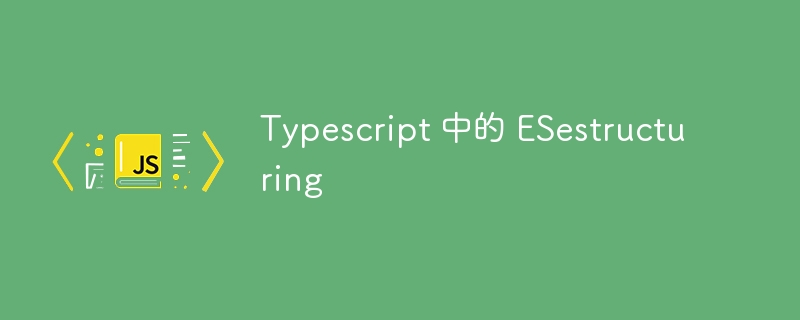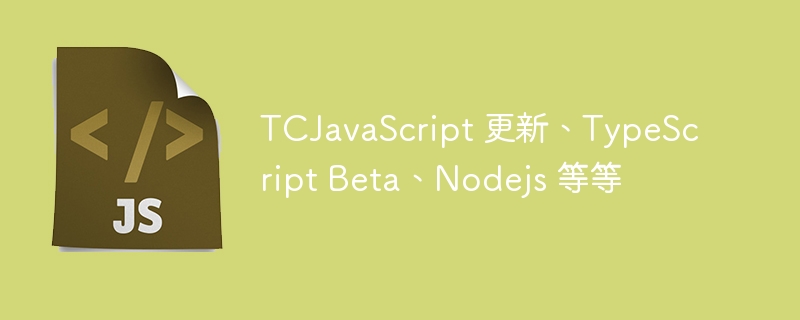
解构使得将数组中的值或对象中的属性解包为不同的变量成为可能。
优点
- 使代码简洁且更具可读性。
- 我们可以轻松避免重复的解构表达式。
一些用例
- 从对象、数组中获取变量值。
let array = [1, 2, 3, 4, 5];
let [first, second, ...rest] = array;
console.log(first, second, rest);
//expected output: 1 2 [3,4,5]
let objectfoo = { foo: 'foo' };
let { foo: newvarname } = objectfoo;
console.log(newvarname);
//expected output: foo
// nested extraction
let objectfoobar = { foo: { bar: 'bar' } };
let { foo: { bar } } = objectfoobar;
console.log(bar);
//expected output: bar
- 仅更改对象中所需的属性。
let array = [
{ a: 1, b: 2, c: 3 },
{ a: 4, b: 5, c: 6 },
{ a: 7, b: 8, c: 9 },
];
let newarray = array.map(({ a, ...rest }, index) => ({
a: index + 10,
...rest,
}));
console.log(newarray);
/* expected output: [
{
"a": 10,
"b": 2,
"c": 3
},
{
"a": 11,
"b": 5,
"c": 6
},
{
"a": 12,
"b": 8,
"c": 9
}
]*/
- 将参数中的值提取到独立变量中。
// object destructuring:
const objectdestructure = ({ property }: { property: string }) => {
console.log(property);
};
objectdestructure({ property: 'foo' });
//expected output: foo
// array destructuring:
const arraydestructure = ([item1, item2]: [string, string]) => {
console.log(item1 , item2);
};
arraydestructure(['bar', 'baz']);
//expected output: bar baz
// assigning default values to destructured properties:
const defaultvaldestructure = ({
foo = 'defaultfooval',
bar,
}: {
foo?: string;
bar: string;
}) => {
console.log(foo, bar);
};
defaultvaldestructure({ bar: 'bar' });
//expected output: defaultfooval bar
- 从对象中获取动态键值。
const obj = { a: 1, b: 2, c: 3 };
const key = 'c';
let { [key]: val } = obj;
console.log(val);
//expected output: 3
- 交换值。
const b = [1, 2, 3, 4]; [b[0], b[2]] = [b[2], b[0]]; // swap index 0 and 2 console.log(b); //expected output : [3,2,1,4]
- 获取对象的子集。
const obj = { a: 5, b: 6, c: 7 };
const subset = (({ a, c }) => ({ a, c }))(obj);
console.log(subset);
// expected output : { a: 5, c: 7 }
- 进行数组到对象的转换。
const arr = ["2024", "17", "07"],
date = (([year, day, month]) => ({year, month, day}))(arr);
console.log(date);
/* expected output: {
"year": "2024",
"month": "07",
"day": "17"
} */
- 在函数中设置默认值。
function somename(element, input, settings={i:"#1d252c", i2:"#fff", ...input}){
console.log(settings.i);
console.log(settings.i2);
}
somename('hello', {i: '#123'});
somename('hello', {i2: '#123'});
/* expected output:
#123
#fff
#1d252c
#123
*/
- 获取数组长度、函数名称、参数数量等属性。
let arr = [1,2,3,4,5];
let {length} = arr;
console.log(length);
let func = function dummyfunc(a,b,c) {
return 'a b and c';
}
let {name, length:funclen} = func;
console.log(name, funclen);
/* expected output :
5
dummyfunc 3
*/
- 组合数组或对象。
//combining two arrays
const alphabets = ['A','B','C','D','E','F'];
const numbers = ['1','2','3','4','5','6'];
const newArray = [...alphabets, ...numbers]
console.log(newArray);
//expected output: ['A','B','C','D','E','F','1','2','3','4','5','6']
//combining two objects
const personObj = { firstname: "John", lastname: "Doe"};
const addressObj = { city: "some city", state: "some state" };
const combinedObj = {...personObj, ...addressObj};
console.log(combinedObj);
/* expected output: {
"firstname": "John",
"lastname": "Doe",
"city": "some city",
"state": "some state"
} */
以上就是Typescript 中的 ESestructuring的详细内容,更多请关注php中文网其它相关文章!
版权声明:本文内容由网友自发贡献,版权归原作者所有,本站不承担相应法律责任。如您发现有涉嫌抄袭侵权的内容,请联系 yyfuon@163.com






